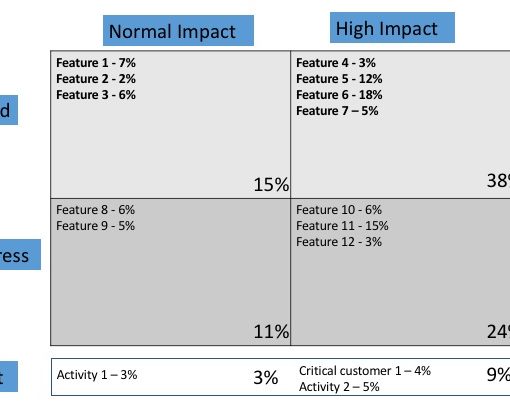Why all the fuss about variable pricing? I have been in many conversations with CEO’s about how to achieve variable pricing. Let me start by describing what I mean by the term ‘variable pricing’. I mean a pricing mechanism where increases in customer value derived or customer usage of the product automatically results in increased revenue to the SaaS vendor.
At the most basic level, variable pricing holds the promise of ensuring that revenue increases as costs do. But that is not the primary attraction. The real attraction (do not tell the customers) is to achieve true value-based pricing. That is a concept a lot of customers hate but, for enterprise SaaS companies, it is the holy grail. After all, SaaS ties the vendor more closely to customer success. What better way to reward this than to participate in the value your solution creates?
Enterprise customers can often accept the concept of variable pricing (if not accepting explicitly the idea of value-based pricing) as they can justify it based upon the belief that it represents increased usage on their part and increased costs for the vendor. They also like committing to a lower amount and only paying more if their usage increases so it feels like a shared risk, shared reward relationship.
For a SaaS company, what is the perfect variable pricing mechanism? It should have a baseline committed amount for planning and cash flow purposes and to ensure the customer has both skin in the game and a commitment to utilizing the solution. The variable component should ideally be tied to easily measurable metrics that both the vendor and customer have access to. These metrics should be directly, or at least closely, tied to the value the customer receives from the use of the solution.
The mechanism at Demandware was almost perfect in this regard. The baseline commitment level was decided by the customer, with higher levels of commitment resulting in lower variable percentages. So customers were incented to commit as much as they could justify. The variable element was based upon what our ecommerce customers sold to their consumers, otherwise known as GMV (Gross Merchandise Value). A small percentage of the GMV (once the customer exceeded their baseline commitment) would be owed to Demandware. This metric was directly and independently measurable by both the customer and Demandware and, for most customers, increasing GMV was a direct indication of more value from the solution.
Of course, it is not always possible to create a mechanism that is measurable by both parties and indisputably tied directly to customer value. The next best approach is some usage mechanism – number of campaigns, number of emails, number of queries, etc. Per user pricing is variable in this latter sense, but often has the disadvantage of discouraging wider usage within the customer, which can be counterproductive. While none of these approaches are as ideal since the customer can argue about value creation, at least it is clear that they represent more usage (and implicitly more cost and support by the vendor).
There are two other considerations that come into play. First, enterprise customers all have budget cycles. For many, the idea of an unpredictable expense based upon a variable metric is a negative since it is difficult to properly budget. (At Demandware, we avoided this dynamic since if GMV was higher than budget, it was OK for expenses to be a little higher than budget as well.) A way around this is to have the higher costs kick in at the next budget cycle, but have them be contractually committed once they occur.
The other consideration is if the metric is very cyclical or discretionary. Once again, this was not an issue at Demandware as customers would not consciously choose to lower their GMV in a recession. But things like marketing campaigns or email blasts could be subject to large discretionary cuts when budgets get tight and the SaaS vendor could find its expected revenue falling across many customers simultaneously. There is no easy solution to this but, for such vendors, there is more value in a higher baseline commitment.
For enterprise SaaS vendors, achieving variable pricing is worth quite a bit of experimentation and effort and there are many different approaches that can ultimately work.




One thought on “Variable Pricing”
Good article.